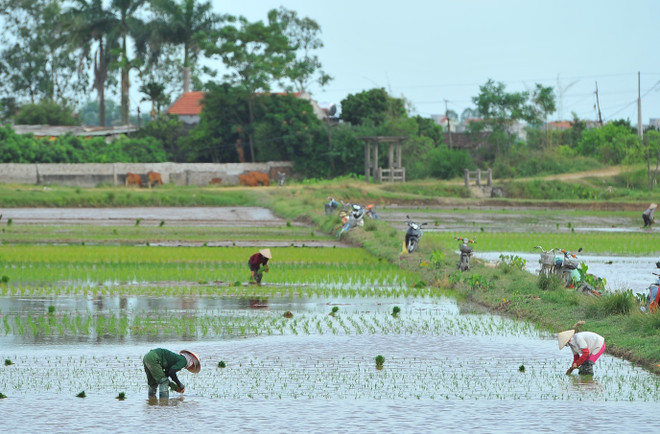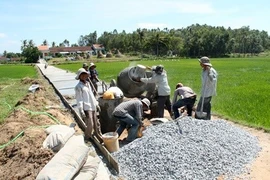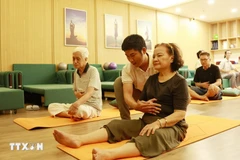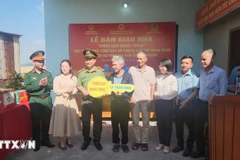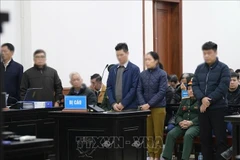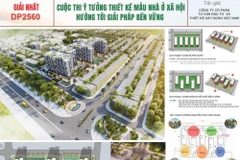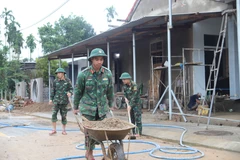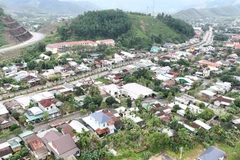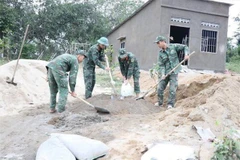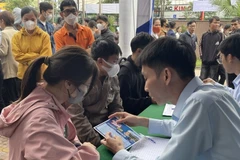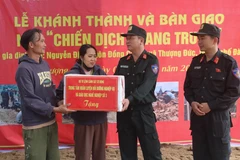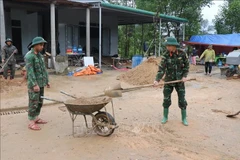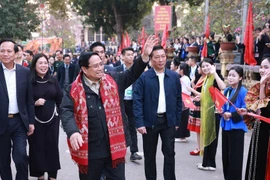Ninh Binh (VNA) – Both material andspiritual lives of rural residents in the northern province of Ninh Binh havebeen improved over the past decade thanks to the national target programme forbuilding new-style countryside.
The national target programme, initiated by theGovernment in 2010, sets 19 criteria on socio-economic development, politics,and defence, among others, aiming to boost the development of rural regions ofVietnam. The number of criteria was increased to 20 in 2015.
Ninh Binh had a low starting point when it beganrural development efforts under the national programme in 2010. Many of itscommunes met five criteria, but some satisfied only one or two criteria. Localinfrastructure was also in dilapidated condition.
After almost 10 years of implementing thenational target programme, 89 or 75 percent of the 118 local communes have beenrecognised as new-style rural areas. Each commune met 17.7 criteria on average,up 12.7 from 2010, and no communes have the number of criteria satisfied lowerthan 10.
Building new-style rural areas has become awidespread emulation movement attracting many investment resources. About 32.82trillion VND (1.41 billion VND) has been mobilised for the work in Ninh Binh sofar.
The province has taken creative measuressuitable with local conditions to carry out the national target programme,winning the support of local people. It has been assessed as one of the leadinglocalities in Vietnam in building new-style countryside.
As many as 12,920 roads with the total length ofover 1,540km have been constructed. Hundreds of schools, communal clinics,markets, water supply facilities and cultural centres have also been upgradedor built.
According to Deputy Director of the provincialDepartment of Agriculture and Rural Development Tran Van Ha, the building ofnew-style countryside in Ninh Binh is becoming more and more substantive. Oneof the biggest successes is maximising resources for infrastructure developmentto serve people’s daily and production activities, thus meeting socio-economicdevelopment demand.
Meanwhile, rural economic structure has beenshifted towards industrialisation and modernisation. Mass production,application of high technology and land accumulation have been promoted inagriculture, helping to almost double production value from 65 million VND perha in 2010 to 125 million VND per ha in 2019.
Notably, land accumulation has been associatedwith agricultural restructuring, thus facilitating farming activities andimproving farmers’ income. Up to 97 communes have completed this work with over38,460ha of farmland accumulated.
Pham Ngoc Phuc, head of the social supportdivision of the provincial Department of Labour, Invalids and Social Affairs,said Ninh Binh has well combined new-style rural area building activities withpoverty reduction efforts to boost mass production and improve poor households’income. Support for deprived families, the building of effective productionmodels and vocational training provision have generated observable outcomes.
Over the last 10 years, local annual per capitaincome has risen, from 16 million VND in 2010 to 41 million VND in 2018. Thebuilding of new-style rural areas has also created conditions for the poor tobetter access basic social services, helping to bring down the respective poorand new-poor household rates from 12.39 – 9.16 percent in 2010 to 3.63 – 5percent last year.
In 2018 alone, more than 4,110 households inNinh Binh escaped from poverty while 6,500 others emerged from the near-poorstatus to middle-level living standards and higher.
Phuong said in the coming time, the provincewill continue combing the new-style rural area building programme with the sustainablepoverty reduction one and capitalising on different resources, including theState’s support, the local budget, businesses’ contribution and the community’sparticipation, for the work.
As of June this year, 4,402 communes acrossVietnam, or 49.38 percent of all communes, had been recognised as new-stylerural areas. Seventy-six districts of 34 provinces and centrally-run citiesnationwide received recognition for meeting all criteria, according to a recentconference reviewing in the national target programme. -VNA
